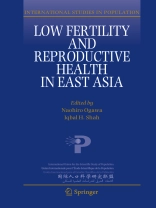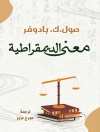This book provides a unique blend of social and biomedical sciences in the field of low fertility and reproductive health. It offers a significant contribution to understanding the determinants of low fertility mostly in East Asia, including an assessment of the effectiveness of policies that aim to raise fertility. It introduces new analytical tools and methods and shares application of innovative approaches to analyzing cross-sectional and longitudinal survey data and macro socioeconomic data to shed light on changing mechanisms of low fertility in the context of reproductive health.
The volume introduces the demographic dividend into the study of fertility, analyzes possible impact of population ageing on the amount of resources allocated to child rearing, i.e. the so called ‘crowding effect’ in social care and public spending between the elderly and children. The book also tests the Low Fertility Trap (LFT) hypothesis, a new important theory regarding fertility trends.
The book focuses on East Asia which is numerically large but relatively under-researched with regard to issues covered in various chapters. The relevance of the volume, however, goes beyond countries in East Asia.
The book breaks new grounds and reveals little known facts regarding the influence of endocrine disruptors on male fertility through falling sperm counts, the phenomenon of marital sexlessness and about the sexual behavior of adolescents in East Asia.
İçerik tablosu
Introduction: Naohiro Ogawa, Iqbal H. Shah, and Gayl Ness.- 1: Social norms, institutions, and policies in low-fertility countries: Anne H. Gauthier.- 2: Very low fertility and the high costs of children and the elderly in East Asia: Naohiro Ogawa, Andrew Mason, Sang-Hyop Lee, An-Chi Tung, and Rikiya Matsukura.- 3: The effects of daycare center use on marital fertility in Japan: Sang-Hyop Lee, Naohiro Ogawa, and Rikiya Matsukura.- 4: What are the prospects for continued low fertility in Japan?: Vegard Skirbekk, Rikiya Matsukura, and Naohiro Ogawa.- 5: Low fertility: Choice or chance?: Paul F. A. Van Look.- 6: Trends in male reproductive health and decreasing fertility: Possible influence of endocrine disrupters: Tina Harmer Lassen, Teruaki Iwamoto, Tina Kold Jensen, and Niels E. Skakkebæk.- 7: The sexual behavior of adolescents and young adults in Japan: Ryuzaburo Sato and Miho Iwasawa.- 8: Sexless marriages in Japan: Prevalence and reasons: Yoshie Moriki, Kenji Hayashi, and Rikiya Matsukura.- 9: Community-level effects on the use of reproductive health services in rural China: Zheng Wu, Shuzhuo Li, Christoph M. Schimmele, Yan Wei, Quanbao Jiang, and Zhen Guo.- Index.












